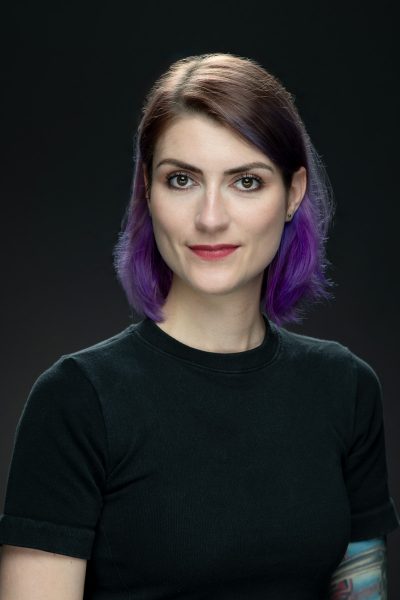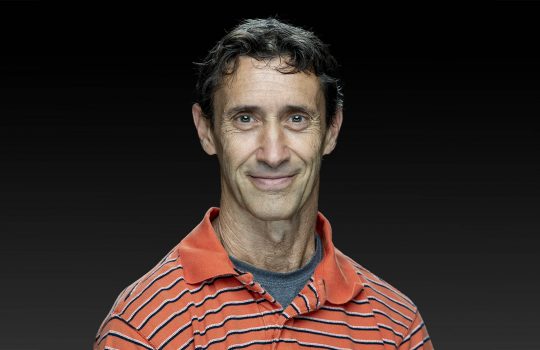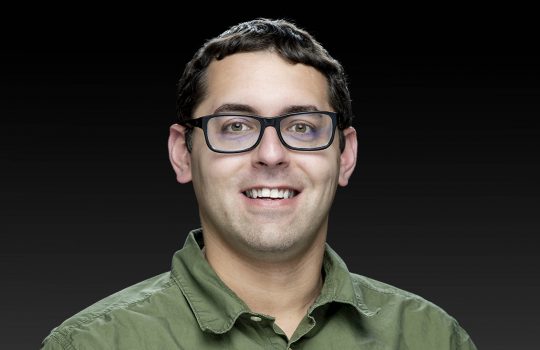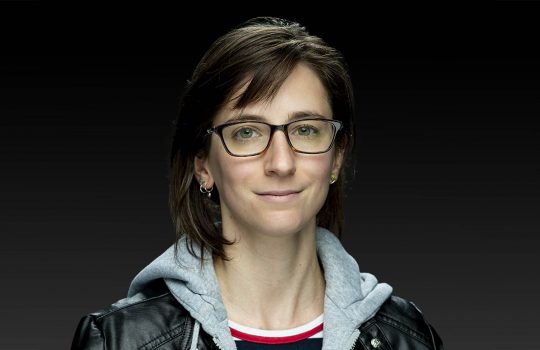During her childhood, Brynn Kristen MacCoy was inspired by “Anne of Green Gables,” a fiction book series that tells the adventures of a spirited, imaginative girl.
“’Anne of Green Gables’ is one of the formative influences in my worldview: a curiosity about the world and an excitement to live in this world knowing that there are all of these open questions,” MacCoy said. “I’ll never run out of interesting things to look into.” “It’s really resonant how she’s just a little bit different and out of sync with people’s expectations, and that doesn’t hold her back.”

Brynn Kristen MacCoy
Now a researcher passionate about uncovering the laws of physics by studying the muon, MacCoy dedicates her award-winning thesis to physicists who feel like they don’t quite fit by quoting “Anne of Green Gables”: “Isn’t it splendid to think of all the things there are to find out about?”
MacCoy, who received a doctorate in physics from the University of Washington last year, received this year’s Universities Research Association Honorary Doctoral Thesis Award. This award recognizes an outstanding doctoral thesis based on research at or in collaboration with Fermilab.
“Once again, the committee was thrilled to see so many great theses from Fermilab research,” said Chris Stoughton, chair of the URA Thesis Award Committee. “Dr. MacCoy’s thesis will be a resource for experts in muon physics, as well as an engaging introduction for all who want to learn more about how these measurements are made, and why they have critical importance for the field of particle physics.”
URA President and CEO John Mester added, “Dr. MacCoys’ thesis probes the essential tools of metrology to lay the foundation for predictive new physics.”
MacCoy’s path to research in particle physics began in an unexpected place: photography. As a fine arts student at the University of Washington, she took a physics class focused on the science of light and color.
“It just absolutely blew me away,” she said. “I had not understood before that light is actually both a wave and a particle. By the end of that class, I was so interested that I wanted to try to major in physics.”
After graduating with degrees in physics and photography, she worked for a few years in private industry on precision measurement technology, before returning to the University of Washington as a Ph.D. student. There, she joined a group that works on the Muon g-2 experiment at Fermilab.
The Muon g-2 experiment seeks to precisely measure the way muons, charged fundamental particles like electrons but more massive, spin in a magnetic field. Muons wobble like a spinning top when they’re in a magnetic field, MacCoy said, and observing the particles that the muons decay into lets physicists measure the frequency of that wobble.
Theories from the Standard Model of particle physics can very precisely predict this measurement, so Muon g-2’s goal is to provide a measurement to compare to theory. If the values differ, it could indicate something is happening that is not explained through the Standard Model. Last summer, the Muon g-2 experiment announced the results from its first and second data-taking runs, providing the most precise measurement of this muon behavior yet, with higher precision expected as more runs are analyzed.
To supply the positively charged muons, or antimuons, for the Muon g-2 experiment, the linear particle accelerator at Fermilab shoots a beam of protons at a target. This collision produces other particles, including muons, which are redirected to the building where Muon g-2 resides. Once there, the straight muon beam encounters a strong magnetic field, curving the muons into a circle around a ring until they decay.
MacCoy’s doctoral research focused on beam dynamics, or specifically, how movement of the beam affects the measurement result.
A major challenge for the beam is the transition from a straight line into a circular path. MacCoy worked on a system of detectors that monitors the direction of the beam and the distribution of its muons as it enters the ring. Verifying that the beam’s properties match expectations is crucial for an experiment like Muon g-2.
“If you imagine trying to shine a flashlight through a really long narrow pipe, if you get that angle a little bit wrong, it might just run into the sides and not actually make it through,” MacCoy said. “If we don’t actually get the muons into the magnet at the rate that we need to, then we can’t collect enough data.”
Additionally, the researchers had to know exactly where the muons were located once they were in the magnetic field. The result that Muon g-2 is measuring relies on the muons’ wobble frequency and the exact strength of the magnetic field.
“The magnetic field is very uniform, but still, even tiny, one part per million nonuniformities in the magnetic field can affect the measurement,” MacCoy said. “We need to know exactly what they’re doing.”
Finally, MacCoy studied higher-order systematic effects, or problems in the data that become more important as the data set becomes bigger.
“The more statistics you collect, the more the statistical uncertainty goes down, and the more your systematic effects start to make themselves more important,” she said. “Because we are measuring a time dependent effect — the frequency of the wobbling of the muons — anything that changes over the time of our measurement is a potential systematic effect.”
One issue is that the strength of the kicker magnet, which moves the beam into its orbit, changes as muons enter the ring. The muons that experience a stronger kick end up in a different location in the ring, introducing uncertainties to the understanding of the distribution of muons in the magnetic field. This issue contributes a few tens of parts per billion to the experiment’s precision, compared to the ultimate target precision of 140 parts per billion.
The Muon g-2 team discovered this systematic effect in the experiment’s first run. MacCoy worked with a group to build a detector that can understand this effect, which was installed for Muon g-2’s final run.
Now, MacCoy continues to work at the University of Washington as a postdoctoral researcher. She will continue working on the analysis of Muon g-2’s results, as well as fine-tuning the systematics adjustments.
“There’s been low-hanging fruit, where we could put in a little bit of effort and get a big improvement, and we’ve done all of that,” she said. “Now, there’s the higher fruit that we have to put in a lot more effort for a smaller improvement. I’m really excited about picking up those last little higher-hanging fruits and getting the most precise measurement we can.”
Fermi National Accelerator Laboratory is supported by the Office of Science of the U.S. Department of Energy. The Office of Science is the single largest supporter of basic research in the physical sciences in the United States and is working to address some of the most pressing challenges of our time. For more information, please visit science.energy.gov.



